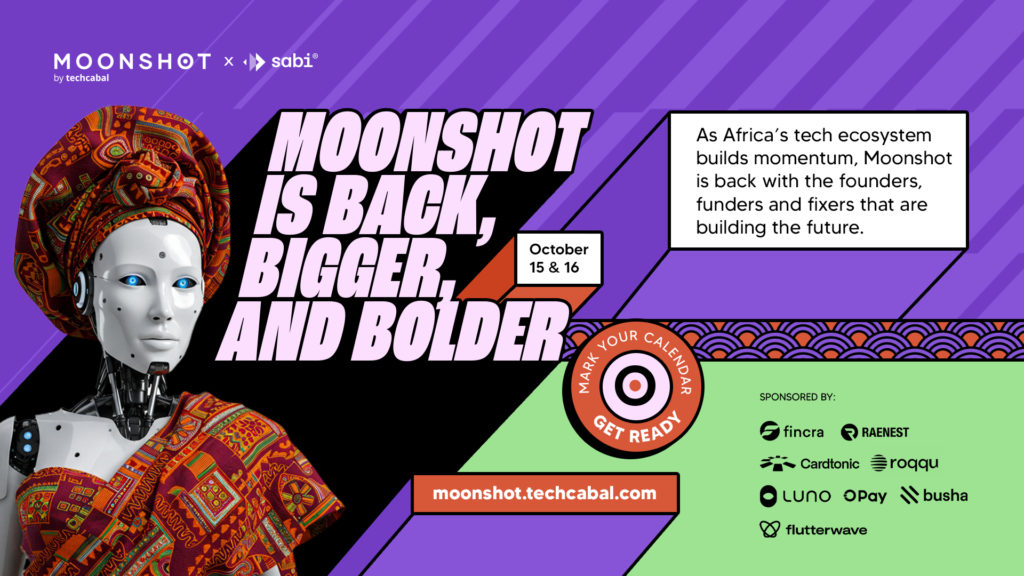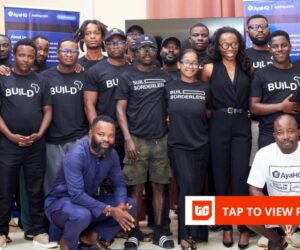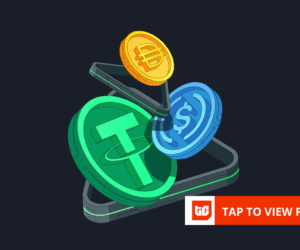Moving money across African borders has always been complicated. Transactions take time to complete, when or if they do, and come with extra costs. When dollars or euros are involved, exchange rates fluctuate, compliance checks hold up settlements, and companies are left scrambling to cover gaps.
Codex, a global blockchain startup, is wagering that a narrow focus can fix this. It is building a blockchain that supports only one thing—stablecoins. Most blockchains try to do many things at once, hosting thousands of tokens and apps. Codex’s bet is that by focusing only on stablecoins, it can make payments faster and easier across borders.
Founded by Haonan Li, Victor Yaw, and Momo Ong, Codex came out of stealth in April 2025 after raising $15.8 million to build a blockchain designed for stablecoins only. The seed round was led by Dragonfly Capital, with additional participation from Coinbase, Circle, Cumberland Labs, Wintermute Ventures and others.
Codex competes in the global $230 billion stablecoin infrastructure market, where the demand for fiat-backed digital assets is growing and regulators are beginning to align around them. The startup is already active in Europe and North America, but its eyes are now on Africa, where cross-border payments remain one of the continent’s thorniest financial problems.
A market defined by friction
To understand Codex’s play, it helps to first look at how money actually moves in and out of Africa today. Sending money from Lagos to Accra can take days, with multiple middlemen adding fees and delays. Digital transfers also face blockages once currencies change. This creates uncertainty and pushes up transaction costs for businesses and consumers.
Stablecoins were supposed to solve this. These are digital tokens pegged to real-world currencies like the US dollar or the Euro. A Nigerian company can hold digital dollars on-chain, send them across the world in minutes, and then cash out locally. Yet in practice, stablecoins rarely behave like perfect dollars. The exchange rate can shift depending on the platform, the chain, or the compliance checks involved.
“One USDC does not always equal one US dollar when you off-ramp into local currencies,” said Oluwaferanmi Ajetomobi, Codex’s Africa expansion lead. “You see differences in price across exchanges, across countries, across compliance checks. That lack of singleness is what Codex wants to solve.”
That “singleness of money” is the critical gap Codex says it was built to close.
Codex’s big bet
Codex runs as a Layer 2 blockchain on Optimism, which means it is built on Ethereum but optimised for speed and lower fees. It is not trying to host all kinds of tokens. Instead, it focuses only on stablecoins, making them equal and interchangeable across markets.
The chain already supports USDC and USDT, two of the most widely used stablecoins, and is preparing to integrate Nigeria’s cNGN.
Codex has also drawn a firm line on what types of stablecoins it will support. Ajetomobi said the blockchain will not list algorithmic stablecoins, pointing to the collapse of Terra’s UST in 2022 as a cautionary tale. Algorithmic stablecoins tried to hold their value using formulas and automatic trades instead of being backed by real dollars in reserve.
When UST lost its peg, it triggered a chain reaction that erased more than $40 billion in value and damaged trust across the industry. Steering clear of that model signals that Codex only wants fiat-backed stablecoins, the versions that regulators are warming up to, and that businesses already use for payments.
“We only list fiat-backed stablecoins, and we work closely with issuers to ensure there is real demand,” said Ajetomobi.
Codex has built what it calls “Swap Avenue,” a product that allows instant swaps across different stablecoins and chains. A company can hold a single Codex balance and move stablecoins to Solana, Polygon, Ethereum, or Tron in seconds, without juggling accounts across multiple blockchains. The transaction fees are paid in USDC, which simplifies accounting for firms used to reconciling charges in volatile digital assets like $ETH or $SOL.
Global players have taken notice. Trading firm Wintermute is already a customer. In Nigeria, Codex has partnered with Canza Finance and is preparing an integration with Blockradar, a custodial platform that services African fintechs.
Why Africa matters in Codex’s strategy
Codex is rolling out globally, but Africa stands out as a proving ground. Cross-border payments remain expensive and unreliable, and intra-African trade is still hampered by mismatched currencies and poor settlement systems. Crypto remittance flows into the continent crossed $100 billion in 2024, with nearly half of it routing through stablecoins.
“Moving money from Nigeria to Ghana is trouble. Moving money from Nigeria to a French-speaking country is trouble. Stablecoins are already being used in these corridors, but the settlements are inefficient.”
Codex believes that by making stablecoins more predictable and liquid, it can become the default settlement layer for African fintechs, remittance providers, and eventually, banks. The company is setting its sights on Nigeria, Kenya, Ghana, Uganda, Morocco, and South Africa.
Regulation as the deciding factor
The bigger stakes may lie in regulation. Most African countries have yet to define rules for stablecoins, and those that have, like South Africa, still stop short of detailed frameworks. Codex is attempting to pre-empt the uncertainty by making compliance part of the blockchain itself.
Transactions on Codex run through built-in anti-money laundering (AML) checks, identity verification, and fiat integrations. If a payment fails compliance, the system reverses it instantly rather than letting it get stuck in a bank’s queue.
“We are compliance-first,” said Ajetomobi. “We want to ensure that any money leaving Codex for a bank account is 100 percent clean before it settles.”
This approach could appeal to regulators, but it could also slow adoption among businesses used to more flexible systems. The risk, as with any crypto infrastructure, is that sudden regulatory crackdowns disrupt growth just as the market begins to scale.
What success looks like for Codex
Codex’s roadmap is ambitious. It wants to enable instant fiat settlement (known as T+0) and support regional stablecoins, as well as potential franc- and shilling-backed tokens. The company has set a target of capturing a quarter of corporate stablecoin flows in Africa within the next year.
The blockchain company’s value will be measured by the quality of its clients and the scale of real-world flows on its rails, said Ajetomobi.
“We are not here to attract noise,” he said. “Our goal is to bring in names that matter and to handle huge volumes.”
If Codex delivers, it could become the backbone of Africa’s cross-border payment infrastructure, smoothing the flows that underpin remittances and trade. If it does not, it will be another blockchain in a crowded global market, competing against giants like Circle and Tether that are already racing to control the stablecoin infrastructure rails.
With players like Codex entering the African Web3 market, it is becoming clear that there’s a real adoption potential for these global players. Stablecoins, too, are no longer a side story in crypto.
In Africa, there are early signs that these digital assets could become a practical bridge between decentralised and traditional finance. Codex is betting that a stablecoin-only blockchain can become the settlement layer for that bridge.
Mark your calendars! Moonshot by TechCabal is back in Lagos on October 15–16! Join Africa’s top founders, creatives & tech leaders for 2 days of keynotes, mixers & future-forward ideas. Early bird tickets now 20% off—don’t snooze! moonshot.techcabal.com









